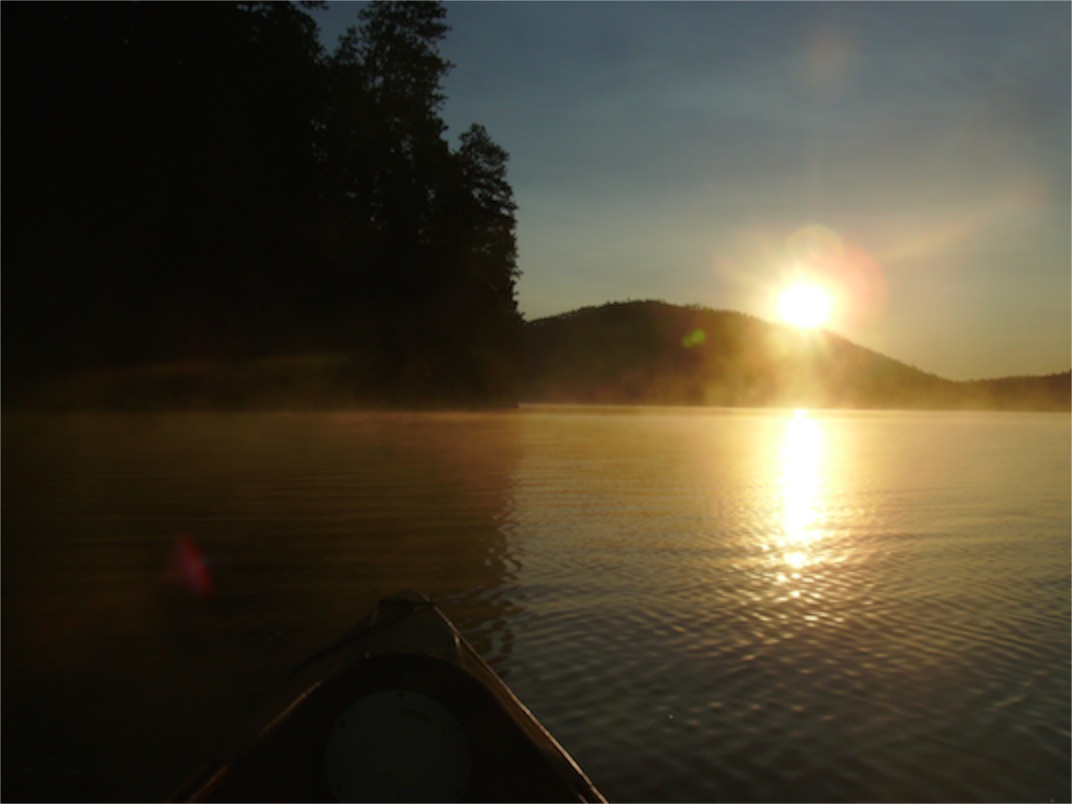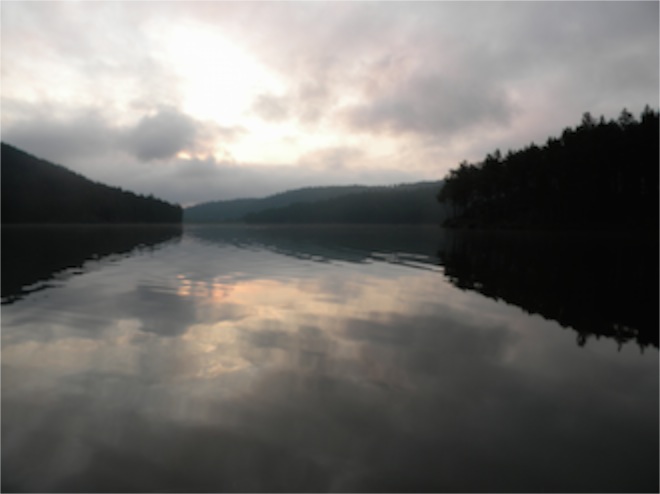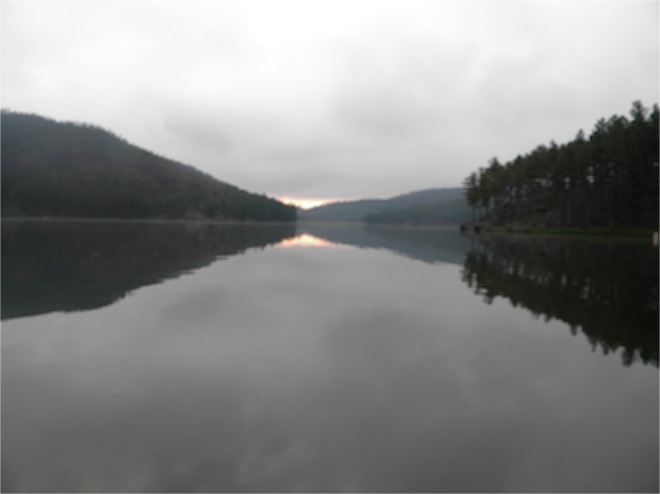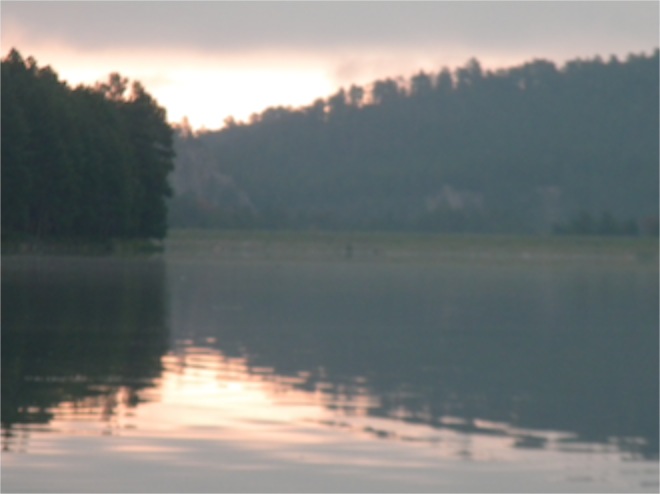Sunrise
16/08/13 05:17
In 1890, at the age of 24, Rudyard Kipling had traveled extensively. He has spent 7 years in India and then traveled the long way around the globe back to Britain, going from India to Japan, from Japan to San Francisco, crossing the North American continent and sailing back to England. He seemed to be nostalgic for the people and places of the east when he wrote his famous poem, “Mandalay.” Mandalay was the capital of Burma when it was a British protectorate. The city, its buildings and people may have become a bit exaggerated in Kipling’s memory, but his poem describes it all as a most attractive and alluring place. I have never been to Burma, but one line from the poem comes to my mind in places far from Kipling’s experience: “And the dawn comes up like thunder.”

I do like the sunrise. It is, perhaps, my favorite time of day.
Living in a scientific era, I know the basic reasons why the sky is so beautiful as the planet rotates to bring the sun into view from wherever I happen to be. At sunrise and sunset, the sun’s light travels tangentially to the earth’s surface from the perspective of a person on the surface of our planet. Because of the low level of the sun, its rays travel long distances through the lower and most dirty layers of the atmosphere. As the light travels through this atmosphere closest to the surface of the earth the dust particles filter out much of the blue light. What we see are the remaining colors of the visible spectrum: red and orange and yellow and pink. The actual colors of the sky give some information as to how much dust and smoke are in the air. When it is smoky or dusty, the sun is bright red. When the air is a bit clearer, there might even be a bit of purple in the sunrise.
 Add a few clouds to reflect the colors and the glow is enhanced. A sunrise can inspire with breathtaking beauty.
Add a few clouds to reflect the colors and the glow is enhanced. A sunrise can inspire with breathtaking beauty.
I like to be outside in the predawn time, when the sky is still dark and at least some of the brighter heavenly bodies can be seen. Outside of the sun and the moon, Venus is the brightest light in the night sky. Brightness in heavenly bodies from our perspective is a factor of how far the light has to travel. The closer the object, the less distance the light travels and therefore the brighter it appears. I don’t own a telescope, so I gauge things by how they look to my eye. On a clear night, I might be able to find Sirius and Rigel. There are several bright stars in Orion. The middle star of Orion’s sword is not a single star, but a cluster of four stars, but to the unaided eye it appears to be nearly as bright as Rigel and Sirius. Betelgeuse is one of the stars of Orion’s shoulder and although I am not exactly sure that I can identify it most of the time, I look for it because it has such a fun name.
If you are out and about before sunrise, the light comes slowly. At first it just seems like it is harder to see the stars. Then there is a bit of a glow that appears to the east. In the hills the glow allows for the outline of the hills to become visible as shadows a long time before the sun makes its appearance. There is plenty of time for anticipation and if you are moving about the actual first appearance of the sun seems sudden and surprising. Wow! There it is. It seems warmer even before the temperature begins to rise.
 The best place to observe a sunrise, in my opinion is on the surface of the water. On a lake everything is doubled. The reflection means that there is a double set of hills with two glowing horizons and when the sun makes its glorious appearance, I can row or paddle my small boat right into the middle of it all. It is like floating in the midst of the sunrise. When the sun makes its first appearance, there is just a yellow strip on the horizon and then suddenly an orange ball that glows in the sky and shimmers on the water. If there is a bit of a breeze, and the surface of the water has a bit of texture, the sun sparkles on the water like a thousand 4th of July sparklers.
The best place to observe a sunrise, in my opinion is on the surface of the water. On a lake everything is doubled. The reflection means that there is a double set of hills with two glowing horizons and when the sun makes its glorious appearance, I can row or paddle my small boat right into the middle of it all. It is like floating in the midst of the sunrise. When the sun makes its first appearance, there is just a yellow strip on the horizon and then suddenly an orange ball that glows in the sky and shimmers on the water. If there is a bit of a breeze, and the surface of the water has a bit of texture, the sun sparkles on the water like a thousand 4th of July sparklers.
It doesn’t last long. The sparkles disappear. The orange becomes yellow and suddenly it is daytime. But in a boat on a lake in the hills, I can prolong the sunrise. By moving around the lake in and out of the shadows of the hills, I can watch the sunrise multiple times. I can paddle into the middle of the reflection on the lake and then follow it by paddling toward the hills. When I am greedy for the beauty, I can watch the same sunrise over and over by chasing the shade of the hills with my little boat.
 It is not difficult to see why the ancients thought that the sun was a god. It would not be difficult to develop rituals around the sunrise. I suppose that an observer watching me paddle at sunrise might think that I worship the sun. But I live in a time when we know much more about what gives color to the sky and how our planet moves in the vastness of a universe of unimaginable proportions. God is much bigger than the warm glow in the midst of the hills. God is much bigger than the experience of a paddler in a small canoe.
It is not difficult to see why the ancients thought that the sun was a god. It would not be difficult to develop rituals around the sunrise. I suppose that an observer watching me paddle at sunrise might think that I worship the sun. But I live in a time when we know much more about what gives color to the sky and how our planet moves in the vastness of a universe of unimaginable proportions. God is much bigger than the warm glow in the midst of the hills. God is much bigger than the experience of a paddler in a small canoe.
But if watching the sunrise in South Dakota can bring to mind Kipling’s 19th century longing for Burma, it is not difficult to imagine that the experience of sunrise has been shared by all of the generations of people throughout all of history. It is not difficult to imagine that generations yet unborn will also experience the same glory. There are connections that link us to others even when we feel alone.
It is a beauty of which I will never tire.

I do like the sunrise. It is, perhaps, my favorite time of day.
Living in a scientific era, I know the basic reasons why the sky is so beautiful as the planet rotates to bring the sun into view from wherever I happen to be. At sunrise and sunset, the sun’s light travels tangentially to the earth’s surface from the perspective of a person on the surface of our planet. Because of the low level of the sun, its rays travel long distances through the lower and most dirty layers of the atmosphere. As the light travels through this atmosphere closest to the surface of the earth the dust particles filter out much of the blue light. What we see are the remaining colors of the visible spectrum: red and orange and yellow and pink. The actual colors of the sky give some information as to how much dust and smoke are in the air. When it is smoky or dusty, the sun is bright red. When the air is a bit clearer, there might even be a bit of purple in the sunrise.

I like to be outside in the predawn time, when the sky is still dark and at least some of the brighter heavenly bodies can be seen. Outside of the sun and the moon, Venus is the brightest light in the night sky. Brightness in heavenly bodies from our perspective is a factor of how far the light has to travel. The closer the object, the less distance the light travels and therefore the brighter it appears. I don’t own a telescope, so I gauge things by how they look to my eye. On a clear night, I might be able to find Sirius and Rigel. There are several bright stars in Orion. The middle star of Orion’s sword is not a single star, but a cluster of four stars, but to the unaided eye it appears to be nearly as bright as Rigel and Sirius. Betelgeuse is one of the stars of Orion’s shoulder and although I am not exactly sure that I can identify it most of the time, I look for it because it has such a fun name.
If you are out and about before sunrise, the light comes slowly. At first it just seems like it is harder to see the stars. Then there is a bit of a glow that appears to the east. In the hills the glow allows for the outline of the hills to become visible as shadows a long time before the sun makes its appearance. There is plenty of time for anticipation and if you are moving about the actual first appearance of the sun seems sudden and surprising. Wow! There it is. It seems warmer even before the temperature begins to rise.

It doesn’t last long. The sparkles disappear. The orange becomes yellow and suddenly it is daytime. But in a boat on a lake in the hills, I can prolong the sunrise. By moving around the lake in and out of the shadows of the hills, I can watch the sunrise multiple times. I can paddle into the middle of the reflection on the lake and then follow it by paddling toward the hills. When I am greedy for the beauty, I can watch the same sunrise over and over by chasing the shade of the hills with my little boat.

But if watching the sunrise in South Dakota can bring to mind Kipling’s 19th century longing for Burma, it is not difficult to imagine that the experience of sunrise has been shared by all of the generations of people throughout all of history. It is not difficult to imagine that generations yet unborn will also experience the same glory. There are connections that link us to others even when we feel alone.
It is a beauty of which I will never tire.